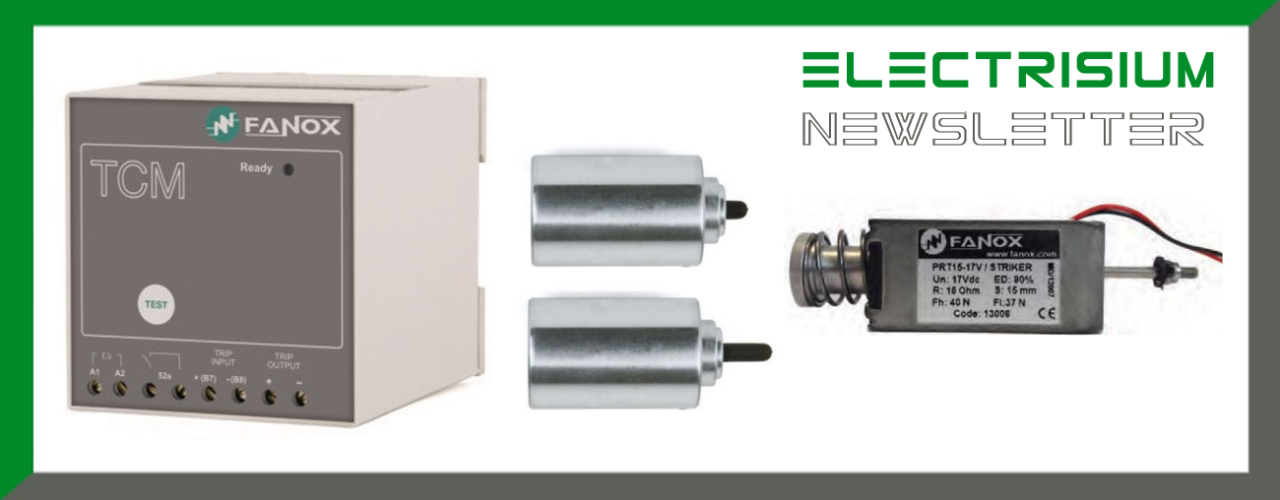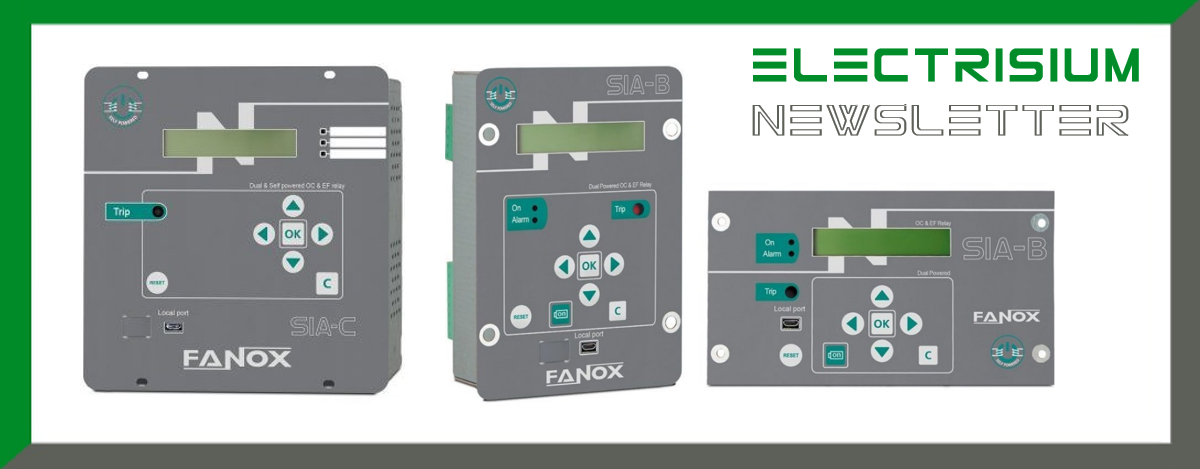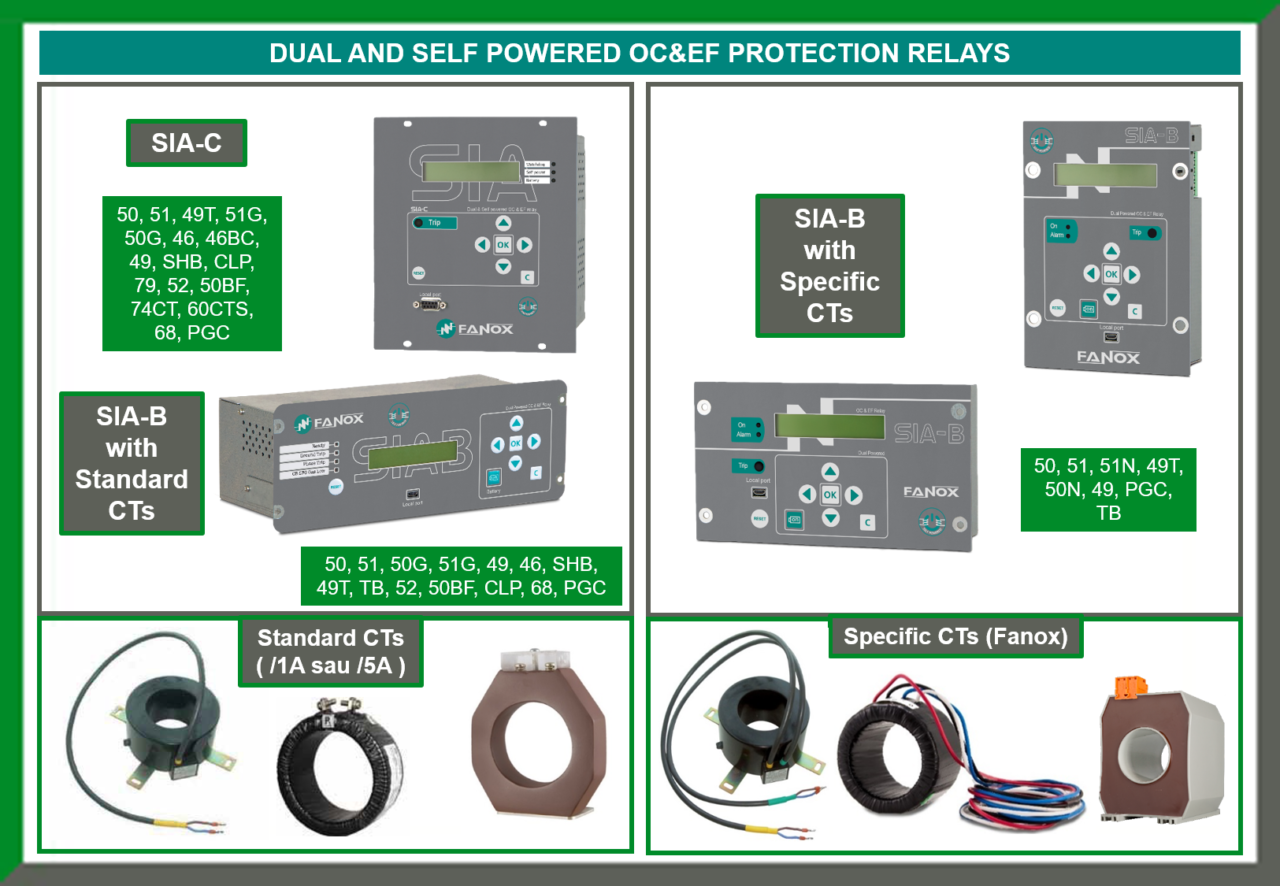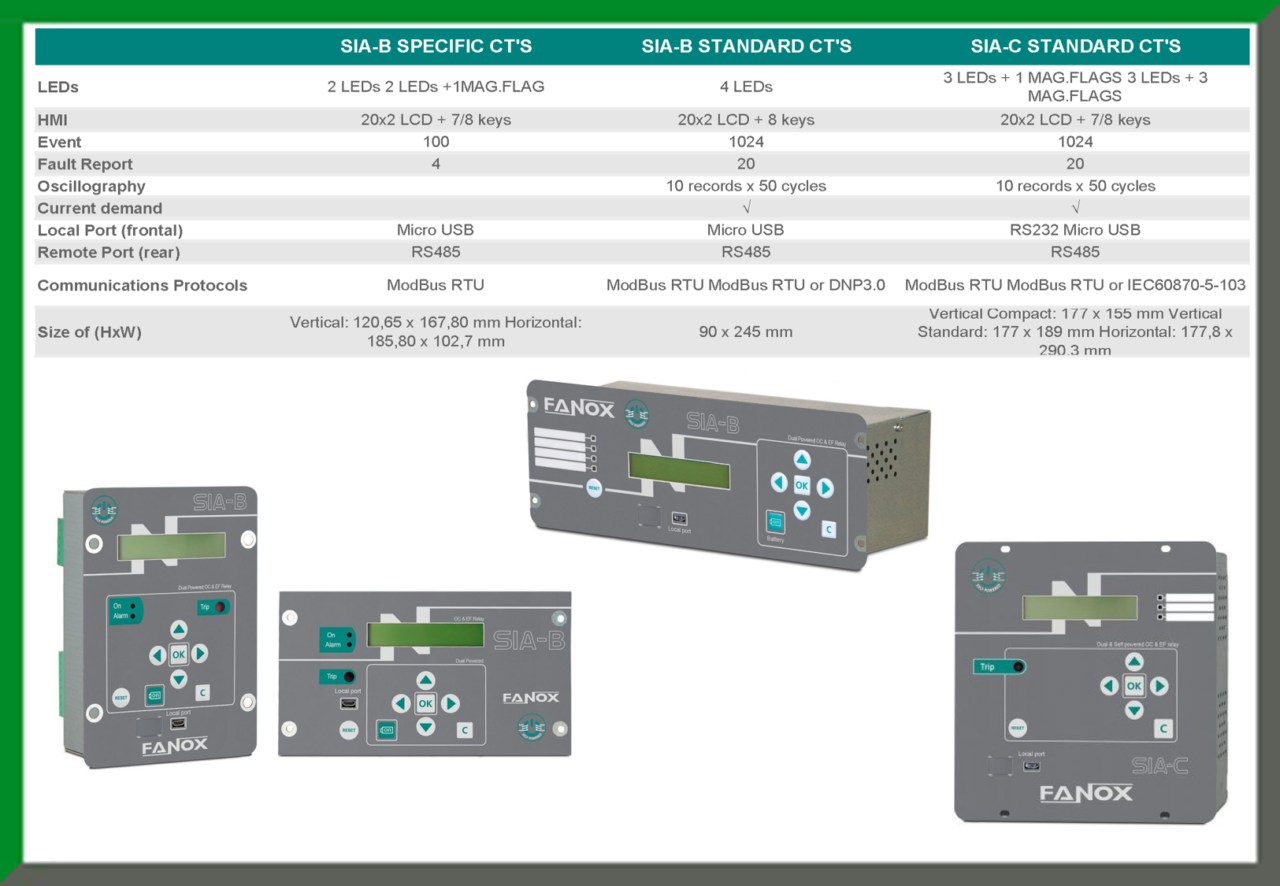Dear friend of Electrisium,
this month’s article reveals the challenges that the self-powered relays had successfully overcome in the recent years and the multiple advantages that they bring for the protection systems of the future. You will also get to know the range of self-powered relays from Fanox and the reasons for their success in the market.
What is a self-powered protection relay and how does it operate?
Protection relays are special types of electrical devices that are used to protect an electrical system from the improper operation and provide a trip signal when there is any fault in the system. These protection relays detect the faults quickly and isolate a faulty circuit or equipment by opening its contacts and thus, preventing damage to the other equipment.
All protection relays were initially electromechanical and self-powered with the sole function of protecting the electrical systems in which they were implemented in. Due to the development of electronics and specifically microprocessors, the digital protection relays were created. But, the newly created digital relays need auxiliary energy to power the electronic components, and it is mandatory to provide them with different auxiliary power sources, thus in some cases, where it was not possible to satisfy this requirement, the self-powered protection relays were still necessary and consequently, the digital self-powered protection relays were developed.
The concept “Self-Power” defines the supplying mode of electronic protection relays for medium voltage, meaning that there is no need for auxiliary voltage to power the relay and that the energy is obtained through current transformers installed on the line which has to be protected. Regarding to the current transformers, two options are available to be used with self-powered relays, namely standard transformers with secondary current of 1A or 5A, or specific transformers (their secondary current is not standard) which provide a higher saturation level or a more comprehensive measurement range, compared to the standard ones.
Because self-powered relays supply themselves from the current transformers and the energy is reduced, using trip coils is not viable because they have a very high electrical consumption. The solution is to use a striker, which consists of an electromagnet that is charged when the breaker is closed and which requires low energy, approximately 100 milijoules, to trip. The striker shaft is moved by a spring and activated by a polarized low power electrical signal, supplied by the relay if a fault occurs.
It is possible to use a self-powered relay if the installed opening mechanism is a coil, but it is necessary to install an external device. Amongst its products, Fanox offers the TCM adapter, which, connected to the trip contact of the relay, provides the required energy to trip the coil. TCM adapter is an energy accumulator that is charged, through its auxiliary supply terminals, when the auxiliary supply is available. The charging time is approximately 10 seconds and once the power supply is lost the TCM has three days of autonomy.

Can self-powered relays offer some of the performance of the auxiliary-powered relays?
Nowadays, self-powered relays have become an essential part of the secondary distribution systems, considering that the maintenance of transformers and distribution substations is massively reduced since batteries, chargers, and related auxiliary supply elements are eliminated, and moreover the protection system is simplified and the related costs are substantially reduced.
Despite their advantages, self-powered relays also faced the following challenges:
► capability to turn on and to be operational in the shortest possible time;
► ability to work with very low currents;
► operation at very low currents.
There are manufacturers such as Fanox that have managed to develop auxiliary-powered relay features in their self-powered relays having very low starting currents and very short operating times.
Registration of information, events log, load profiles, and even oscillography records in the COMTRADE format are other successes of Fanox that very few manufacturers have achieved.
Regarding its product range, Fanox features internationally approved SIA-B and SIA-C self-powered overcurrent and earth-fault protection relays that are designed for secondary distribution. Fanox has performed a complete set of type tests in Kema Laboratories on the SIA-B and SIA-C relays, obtaining this independent certification that confirms the reliability of these products.
Because of their very compact design, prepared to work with all gas insulated switchgears for medium voltage applications, SIA-B and SIA-C relays are able to cover all customer requirements and make installation easier, faster and more economical. They are also the right solution for the renewable energy generation systems such as solar parks and wind turbines.
Both SIA-B and SIA-C are self-powered relays that use standard current transformers. Optionally they can have an auxiliary power supply and the self-powering function simultaneously. On the relays front, a magnetic indicator (flag) is provided for local signaling of the trip, which maintains its position even when the power supply is lost.
Also available is the SIA-B protection relay variant with specific current transformers which provides a comprehensive range of protection functions in an amazingly compact and lightweight housing.
To allow communication, the relays are provided with a local micro-USB front port and with an optional remote communication RS485 port on the rear side. Additionally, the relay can be connected to an external portable accessory (KITCOM) for commissioning and setting up through the front communication port. The possibility of powering up with the KITCOM accessory offers the possibility to activate the trip contact from the test menu, allowing the verification of the circuit breaker before energizing the switchgear.
The relays can also be supplied through a cable which is plugged into its front communication port and directly to the USB port of a PC. Using an USB cable for power supply does not obstruct the USB communications port, as it can be used simultaneously.
Fanox self-powered relays offer some features and performance previously limited to auxiliary-powered relays:
► Modbus RTU or DNP 3.0 for SCADA remote communication;
► up to 10 oscillography records in COMTRADE format;
► advanced protection functions;
► configurable inputs and outputs;
► load data profiling;
► very low start-up levels with minimum consumption <2 VA.
The main characteristic of these relays is the flexibility in the design that allows the model list to be adapted to the requirements and characteristics of the installation. Because of these unique advantages, SIA-B and SIA-C self-powered relays enjoy top recognition among users all over the world.
We are at your disposal for more information or additional clarifications, so contact us.
All the best,
The ELECTRISIUM team




